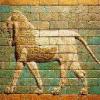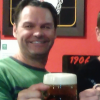http://www.ncbi.nlm....pubmed/23874150
In the present study, resveratrol feeding had no effect on mitochondrial biogenesis in skeletal muscle even though our animals were fed a diet containing the same amount of resveratrol, 4 g/kg diet, as used by Lagouge et al. [3], and more than the dose, 0.4 g/kg diet, used by Bauer et al. [1]. In studies on the effects of resveratrol on cells in culture, concentrations in the 30 µM to 100 µM range have routinely been used [3],[12],[14],[15]. Based on our findings on C2C12 myotubes, the concentration of resveratrol required to induce an increase in mitochondrial biogenesis is above 10 µM, and the data shown by Bauer et al. [1] suggest the concentration of resveratrol needed to activate AMPK in CHO cells is also above 10 µM. The plasma resveratrol concentration in our rats was 1.56±0.28 µM and the highest concentration in the mice of Lagouge et al. [3] was ~0.5 µM. Thus, a likely explanation for the failure of resveratrol feeding to induce mitochondrial biogenesis in rats and mice in our study is its poor bioavailability.
In our experiments on C2C12 cells, we confirmed the finding of Lagouge et al. [3] that treatment of C2C12 cells with a high concentration of resveratrol results in both PGC-1α activation, evaluated using a PGC-1α–GAL4 construct together with a luciferase reporter, and an increase in mitochondrial biogenesis. The research groups of Auwerx and Puigserver have published a large number of studies, reporting that deacetylation activates and acetylation deactivates PGC-1α [3],[7],[15],[33]–[39]. Phosphorylation of PGC-1α by AMPK results in PGC-1 activation and increased mitochondrial biogenesis [22]. We found that high concentrations of resveratrol activate AMPK in C2C12 cells by a toxic effect on mitochondria that reduces ATP level, and that this is the mechanism by which resveratrol activates PGC-1α. We also found that the concomitant increase in SIRT1 activity, also mediated by AMPK, results in a deacetylation of PGC-1α that causes a blunting of the increase in PGC-1α activity induced by AMPK. This is in contrast to the report by Canto et al. [15] that activation of PGC-1α by AMPK is dependent on PGC-1α deacetylation by SIRT1. In support of this conclusion, they reported that inhibition of SIRT1 with nicotinamide or knock down of SIRT1 markedly reduced PGC-1α activation and attenuated the increase in mitochondrial proteins in response to AMPK activation.
















































